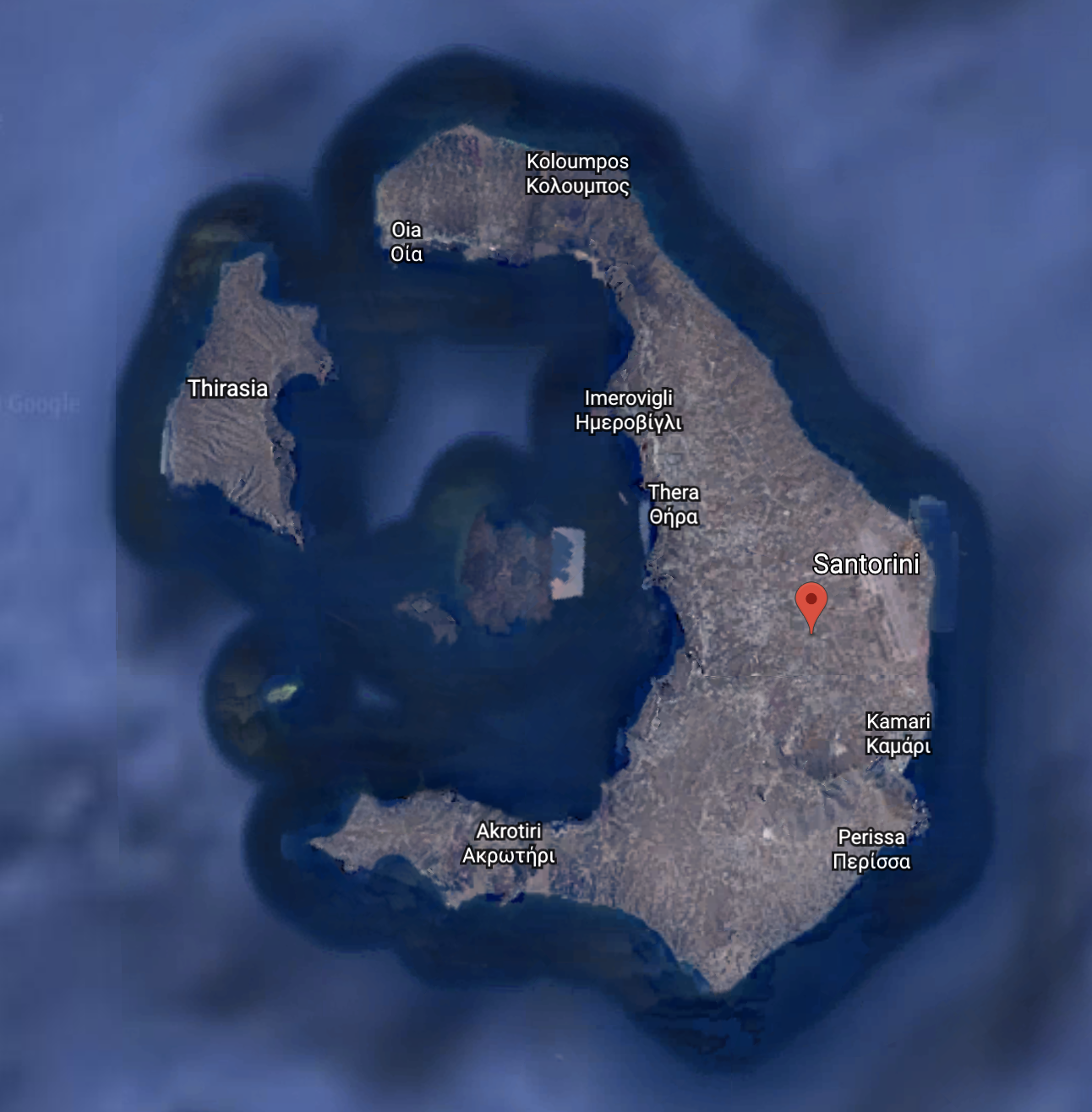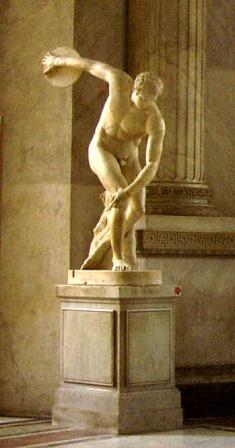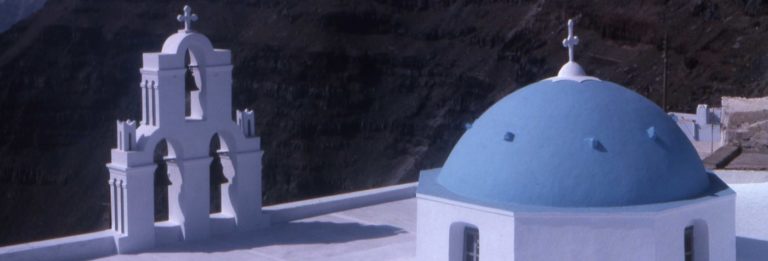Every Greek restaurant you have ever been in has pictures of these islands on the wall. White-washed buildings, blue domed churches, and a pace of life that has not changed much, except for the advent of tourism, in a couple hundred years. You may never want to leave! For a taste of Greek life, pick up Café Tempest: Adventures On a Small Greek Island.

Santorini: This spectacular island ranks up there among the most beautiful places on earth. Watching the sun set across the Mediterranean from your terrace restaurant, while sipping ouzo or retsina, you could be forgiven for forgetting life’s trials and tribulations.
The irony is that this serenity masks the fact that you are perched on the inner cliff of the most infamous volcanic caldera in the Med. This geologic location is the subduction zone where the continental plate for Africa is pushed below the Eurasian plate. On Youtube, you can find a number of videos explaining the history and theories about the Santorini eruptions: https://www.youtube.com/results?search_query=santorini+eruption
It was inhabited in 3200 BC by Minoans from Crete. However, in 1500 BC, this large dome shaped island exploded, causing obvious devastation on the island and sending a tsunami that destroyed much of the other Minoan civilization on Crete at the capital at Knossos. This particular eruption may be the source of the legend of the lost city of Atlantis. (Fire in the Sea: The Santorini Volcano: Natural History and the Legend of Atlantis)

When you visit Santorini today, you are actually cruising into the volcano. It’s just so big, you will think you are amongst a set of islands. Look at a map of the Mediterranean (or check Google Earth) and you will see the crescent shape of the main island, the orientation of the other “rim” islands and the location of the “new” caldera island in the center of the massive crater.
This will give you a sense of the original size of the complete island. Something like 15 cubic miles of earth were moved in the eruption. There are archeological sites similar to Pompeii, where whole buildings were buried in volcanic ash. Recent excavations are uncovering frescoes and mosaic murals. (Minoan and Mycenaean Art (World of Art))
There is no cruise dock in Santorini. That makes getting there half the fun. You enter the town by foot, donkey, or cable car as you scale the cliff left by the explosion. I recommend you go up by donkey and down by cable car. Whatever you do, don’t even think about walking. You will be on the same hairpin-twisting, cobble stone ramp that the donkeys use. And they are not friendly to those in their way. Riding the donkeys at Santorini will be another traveler’s tale you will recount often.
When you finish your excursions and browsing, treat yourself to a beverage from one of the Cliffside terrace restaurants and soak in the Mediterranean sun. You’ll understand the Greek mentality better that way.
Mykonos: While Americans have generally come to the Greek Islands for a dose of ancient history and mythology, Europeans have been coming for the sun and the resort lifestyle. Mykonos is the poster child for the psychic getaway vacation. Ever since Aristotle Onassis starting bringing Jackie Kennedy here in the 60’s, it has been a playground for the rich and famous. The town of Mykonos, (also called Chora, “the town”), is pretty much a resort of iconic whitewashed Greek motif. There are some sites of archaeological interest on the main island. However, this may be a good time to look for souvenirs and plan your retirement to a Greek Island.

From Mykonos, there are excursions to the tiny island of Delos, the legendary birthplace of Artemis and Apollo. This is where you should breeze through D’Aulaires’ Book of Greek Myths and catch up on your gods and goddesses. The archaeological site is very extensive and has been a continuous project for the French School at Athens since 1872. There are temples and plazas, statue remnants and mosaics. The most famous landmark is the Terrace of the Lions.
Katakolon: Your ship is pulling into Katakolon so that you can visit the site of Olympia, the site of the original Olympic Games. You should definitely go. There is a rich and interesting history surrounding the ancient games, their cultural significance, the related politics, the chicanery, the agony of both victory and defeat. Before you go, you should check out a source or two, like The Naked Olympics: The True Story of the Ancient Games, or The Ancient Olympics: A History
.
Corfu: This strategically situated island has a very checkered history. It is right at the entrance to the Adriatic Sea and shares a conqueror’s lineage similar to Dubrovnik. Its Greek origins are honored in the mythology of Poseidon and his river nymph Korkyra. It figured in the ancient Greek rivalries among the major city states, including the Peloponnesian War.
Romans and Byzantines ruled in turn. Then the Venetians took over in 1401 and held on for almost 400 years. The Ottomans assaulted, sieged, attacked, and generally bothered Corfu for much of the Venetian period. However, the Venetian fortresses in the Old Town proved unassailable. By 1797, the French took over, finally conceding the island to the British, before it was allowed to return to Greece in 1864. The non-Greek influences are more evident here than any other Greek Island.
The fortresses in the old town are World Heritage Sites. There are museums and the extensive palace and gardens of the Achilleion, dedicated to Achilles. For a taste of life on this eclectic island, take a look at Good Morning Corfu: Living Abroad Against All Odds.






